
By Judy Carmack Bross
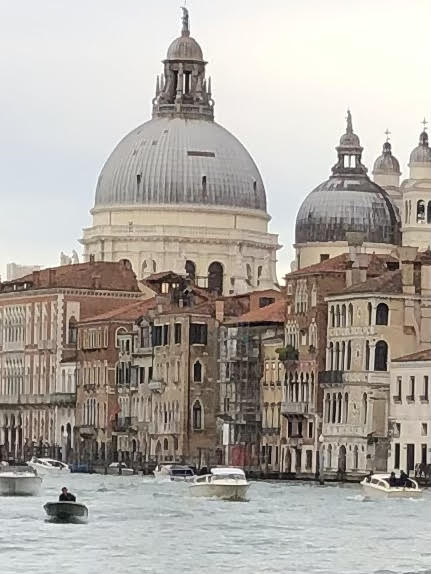 From the Accademia bridge, on vaporetto to the Biannale
From the Accademia bridge, on vaporetto to the Biannale
 From the USA Pavilion executed by Jeffrey Gibson
From the USA Pavilion executed by Jeffrey Gibson
“—O day and night, but this is wondrous strange.—And therefore as a stranger give it welcome.” Shakespeare inspires artist Amanda Ziernele at the Republic of Latvia Pavilion.
The Biennale, Venice, April 24, 2024….Not an art critic in the least or a travel writer like fine Classic Chicago colleagues, I send this postcard from the 60th Biennale feeling surely like a visitor to Chicago’s 1893 World’s Fair, overcome with joy wandering pavilions filled with monument efforts by artists, curators, countries and funders who bought these expressions to Venice.
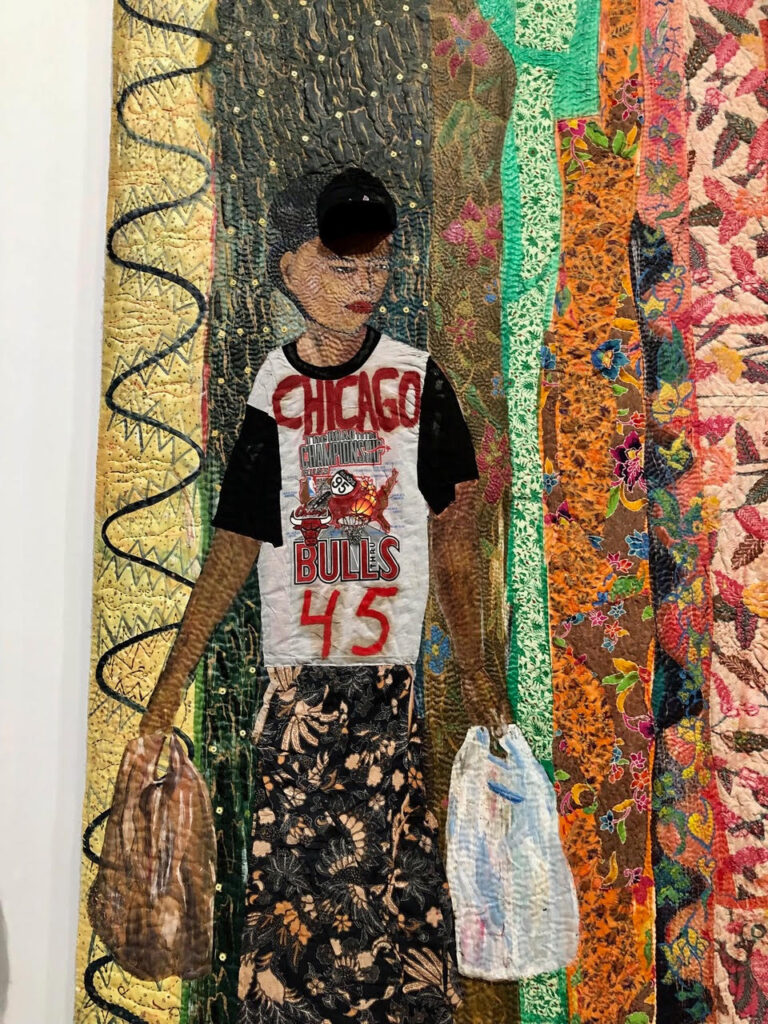 Look who greets visitors entering the Arsenale exhibition: a familiar name
Look who greets visitors entering the Arsenale exhibition: a familiar name
“Strangers Everywhere” which opened this week and runs through November 24, includes 86 national participations in the historic Pavilions at the Giardini, at the Arsenale and across Venice including in historic palazzos, with four countries participating for the first time: Republic of Benin, Ethiopia, Democratic Republic of Timor Leste, and United Republic of Tanzania. Israeli soldiers block the entrance to that county’s Pavilion which has a sign saying that it will open when Hamas hostages are returned.
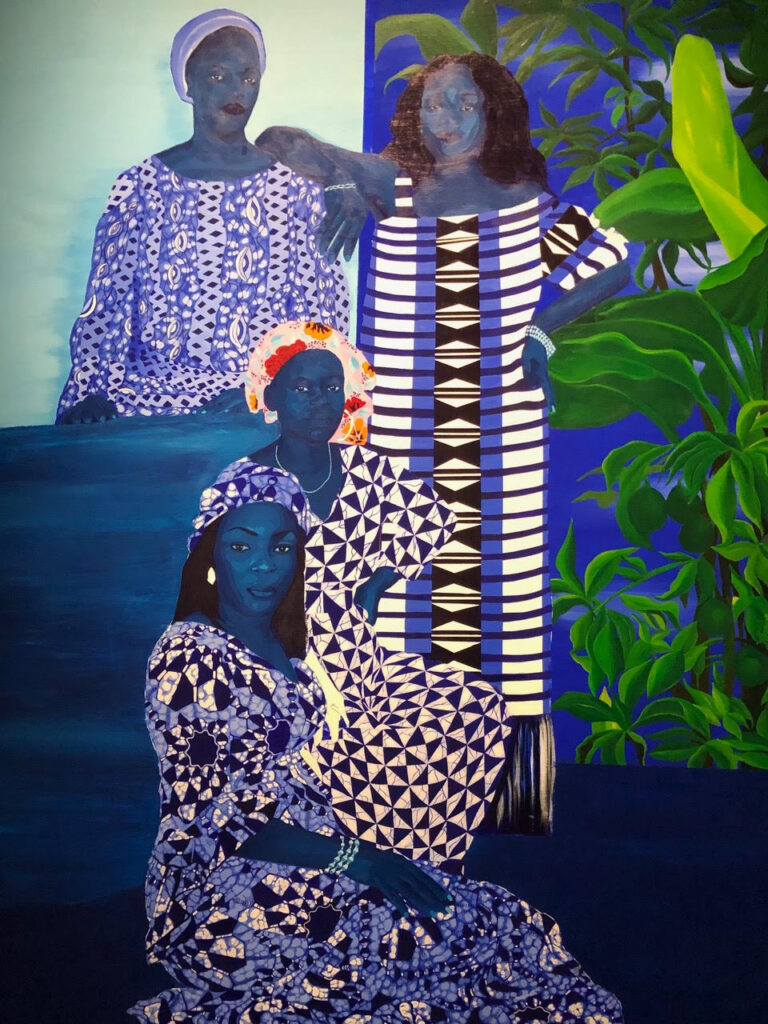
Some of Benin’s extraordinary submissions
 It was at the Arsenale where The Francophone West African nation of Benin showed the strikingly beautiful “Everything Precious is Fragile,” to my daughter Alice York and myself one of the most impressive in the show. It is the first country to follow the main exhibition at the vast shipyard venue. The exhibit relates to themes of decolonization and repatriation, recurring themes throughout the Biennale. In the main Arsenale show screens show migrants drawing their maps of their escape, and as a Chicagoan I longed to see one showing the hazardous route that brought Venezuelans to our city, narrated by one of their own.
It was at the Arsenale where The Francophone West African nation of Benin showed the strikingly beautiful “Everything Precious is Fragile,” to my daughter Alice York and myself one of the most impressive in the show. It is the first country to follow the main exhibition at the vast shipyard venue. The exhibit relates to themes of decolonization and repatriation, recurring themes throughout the Biennale. In the main Arsenale show screens show migrants drawing their maps of their escape, and as a Chicagoan I longed to see one showing the hazardous route that brought Venezuelans to our city, narrated by one of their own.
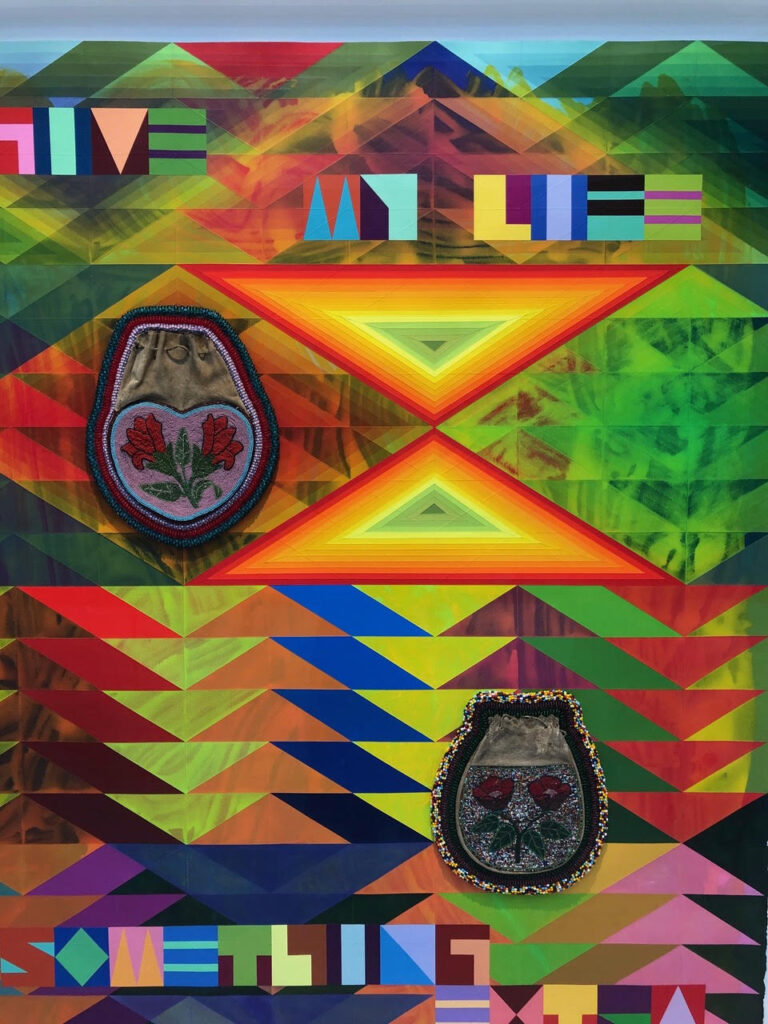
At the US Pavilion, the inspiration of Jeffrey Gibson
 The United Sates Pavilion at the Giardini is the embodiment of the vision of Jeffrey Gibson, A member of the Mississippi Band of Choctaw Indians and of Cherokee descent who grew up in major urban centers in the United States, Germany, and Korea. Murals, paintings, films where dancers become like a child’s kaleidoscope as well as rainbow beadwork, textiles, and found objects from the past two centuries commingle and rate as one of the most stunning place to visit.
The United Sates Pavilion at the Giardini is the embodiment of the vision of Jeffrey Gibson, A member of the Mississippi Band of Choctaw Indians and of Cherokee descent who grew up in major urban centers in the United States, Germany, and Korea. Murals, paintings, films where dancers become like a child’s kaleidoscope as well as rainbow beadwork, textiles, and found objects from the past two centuries commingle and rate as one of the most stunning place to visit.
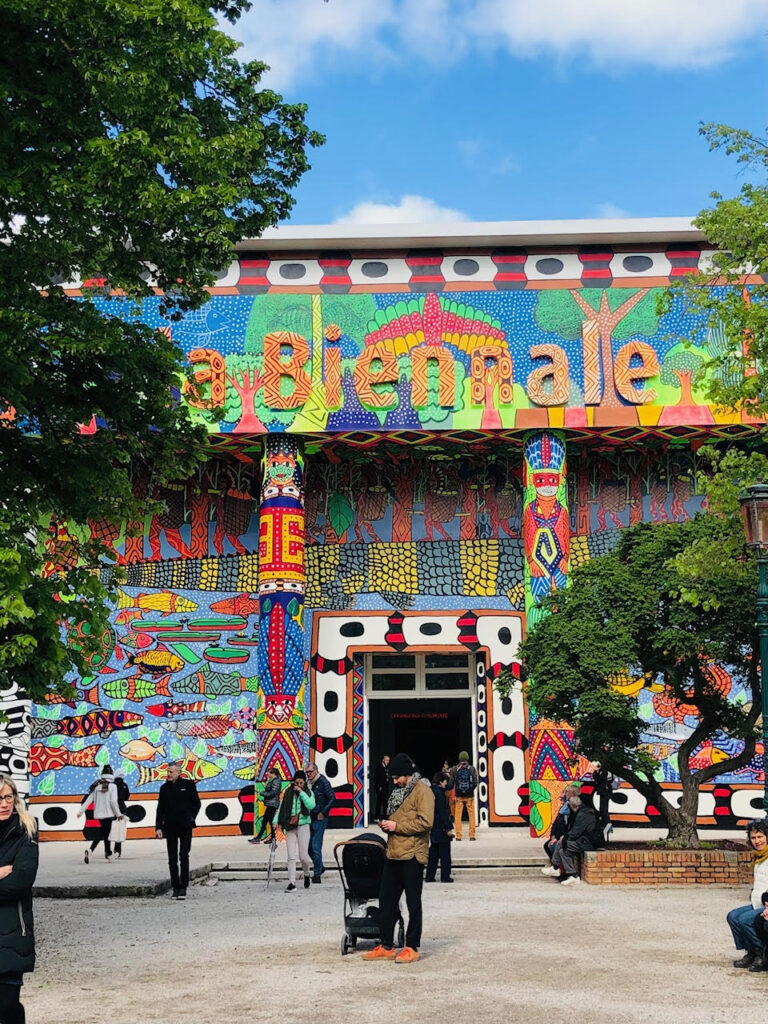 Main building in the Giardini
Main building in the Giardini
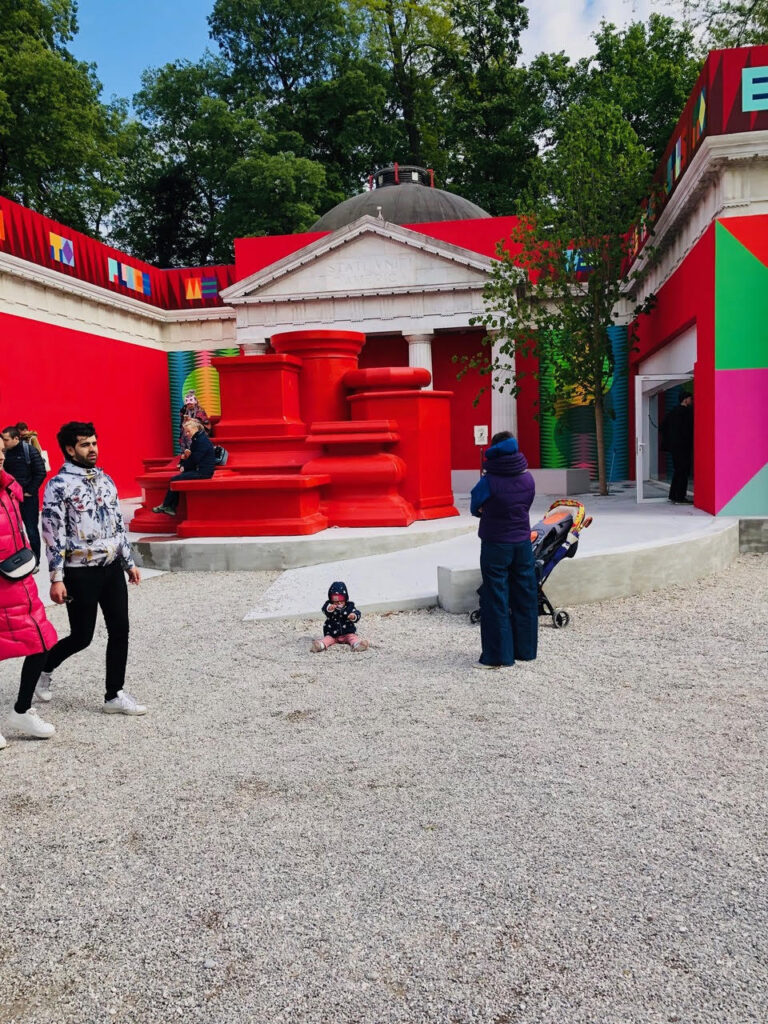 US Pavilion painted red this year
US Pavilion painted red this year
Just walking around the informal gardens at Giardini, whose buildings were built by famous architects such as the US’s built in 1930 by William Adams Delano & Chester Holmes Aldrich—painted Crayola red this year—the varied architecture adds to the joy of exploring. Marshlands were drained by Napoleon to create these public gardens which have been the site of the Biennale since 1895.
 The French Pavilion
The French Pavilion
The French Pavilion is transformed into a film studio, created by Zineb Sedira, mixing past films with colorful floating images.
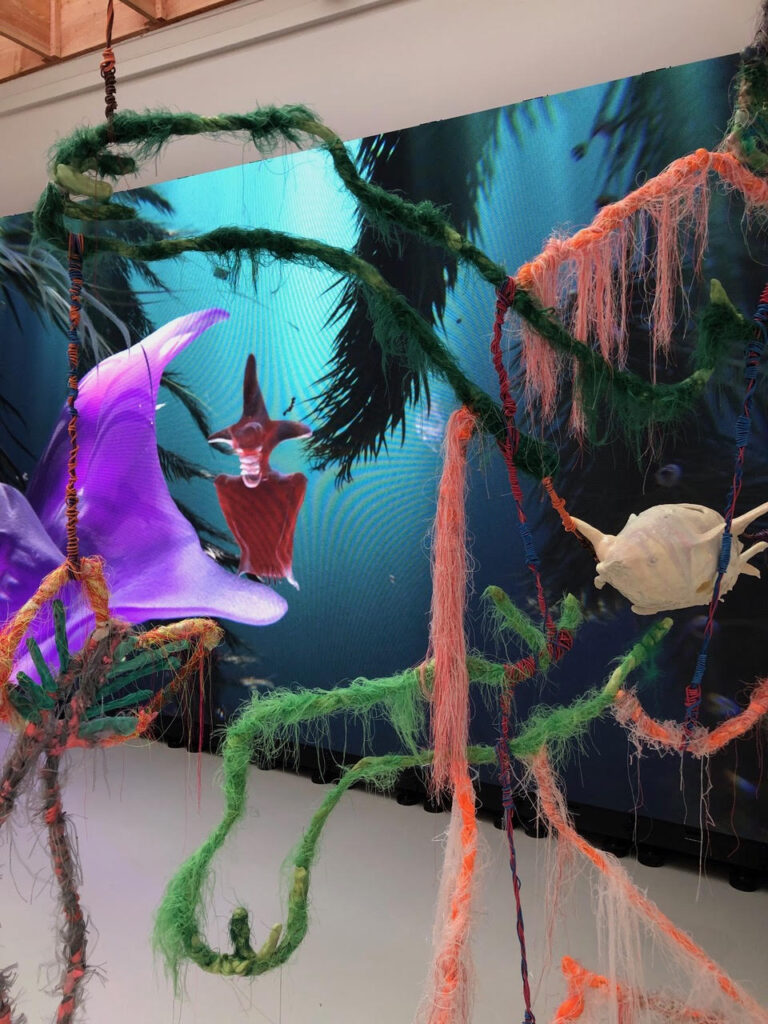 Inside the French Pavilion
Inside the French Pavilion
The incredible work of artist and filmmaker John Akomfrah represents Great Britain with multi-screened video presentations exploring colonial legacies, migration and climate change. The work to create these multi-roomed exhibitions in the Pavilion is incredible.
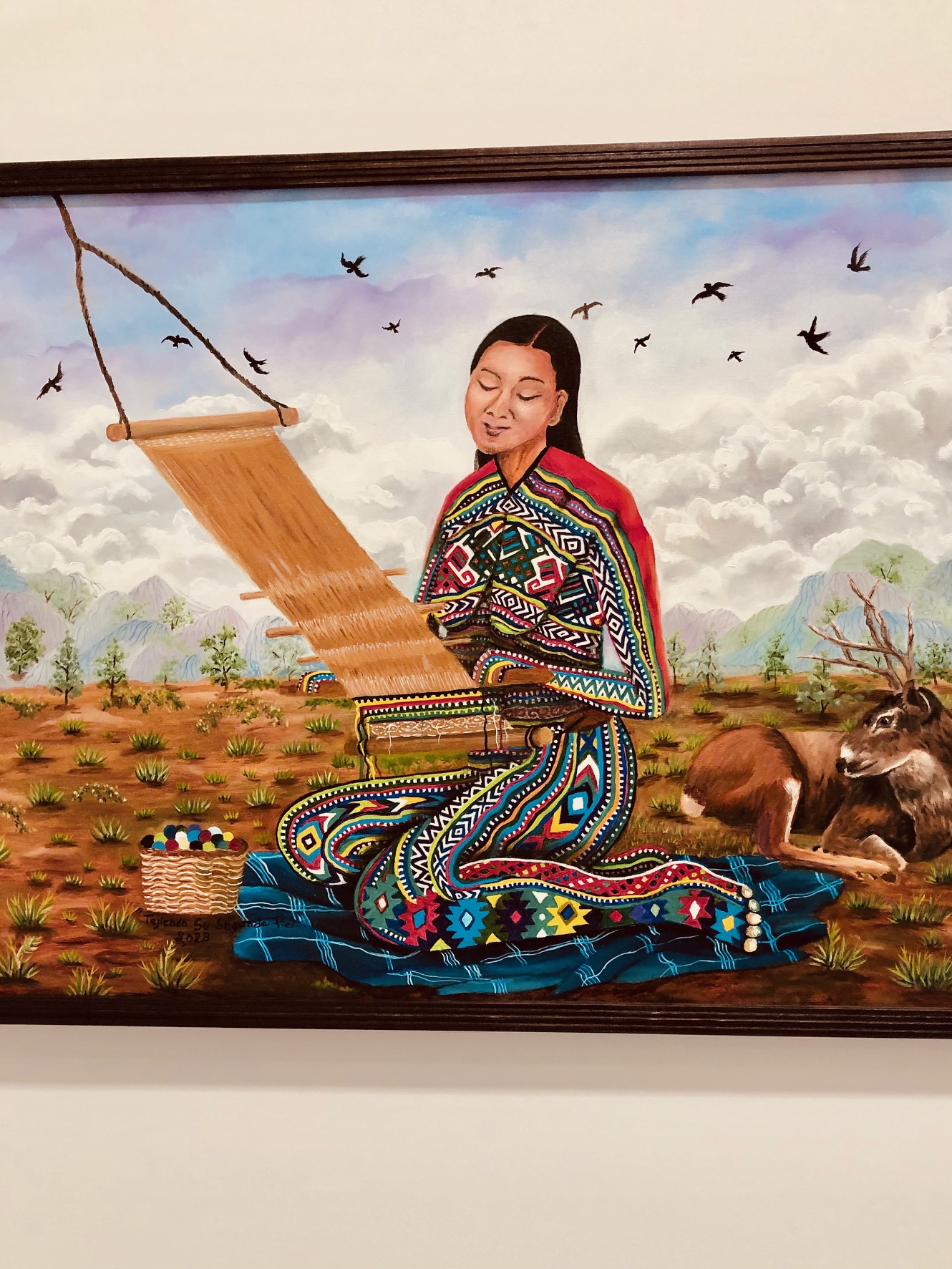 A Mayan weaver by Guatemalan artist Paula Nicho Comez
A Mayan weaver by Guatemalan artist Paula Nicho Comez
As a person fortunate to volunteer with Mayan artists, it was special to see a work by Paula Nicho Comez showing a weaver in Guatemala that speaks to the value and beauty of indigenous textiles and the artists that weave them. It is found in the main building at the Giardini.

From the Ukraine Exhibition
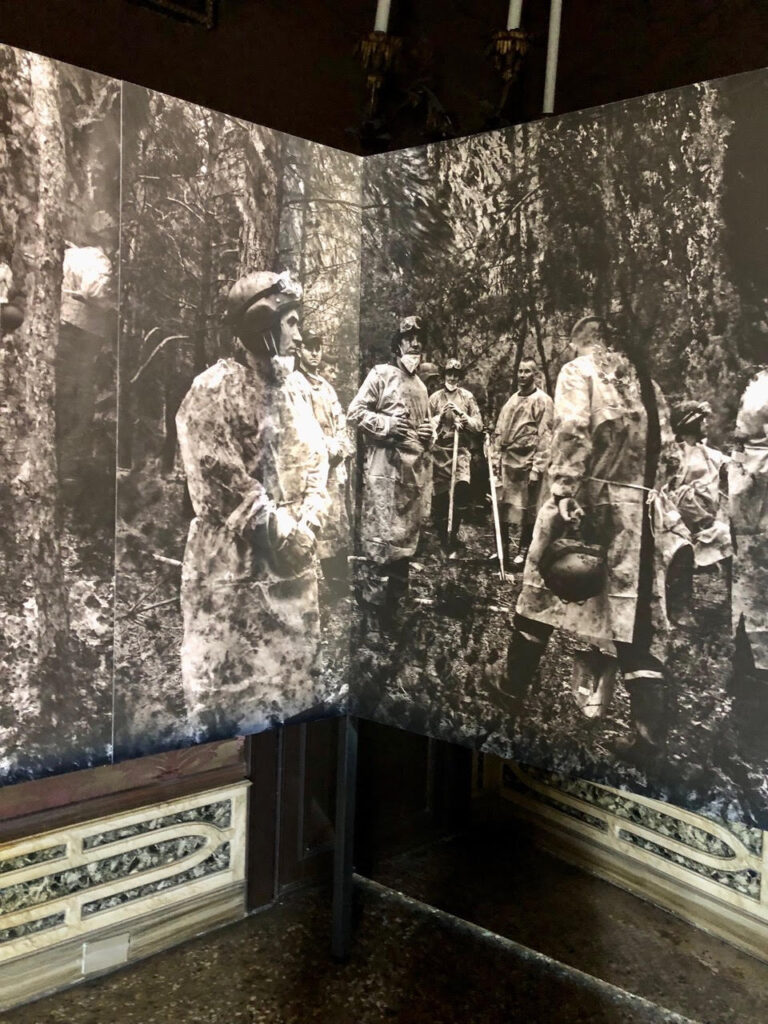
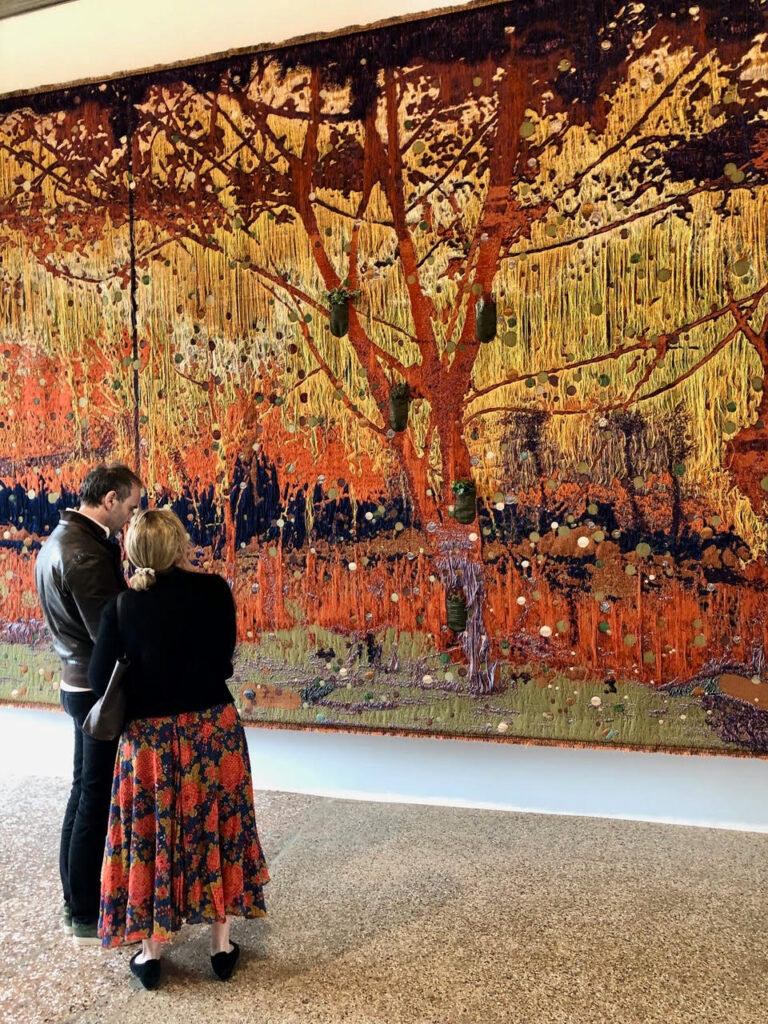 At the magnificent Palazzo Contarini Polignac, built in the early Renaissance and later in the 1920s a dazzling literary salon, the Ukrainian exposition “Dare to Hope” speaks of the terror of their times including an organ whose pipes have been replaced by fired missiles used to bomb Ukraine.
At the magnificent Palazzo Contarini Polignac, built in the early Renaissance and later in the 1920s a dazzling literary salon, the Ukrainian exposition “Dare to Hope” speaks of the terror of their times including an organ whose pipes have been replaced by fired missiles used to bomb Ukraine.
 Jean Cocteau
Jean Cocteau
Backing up the Biannale are museums across Venice. At the Peggy Guggenheim, an incredible tribute to filmmaker, Dadaist poet and set designer Jean Cocteau just opened, featuring scenes from his Beauty and the Beast and the beautiful jewelry he created.
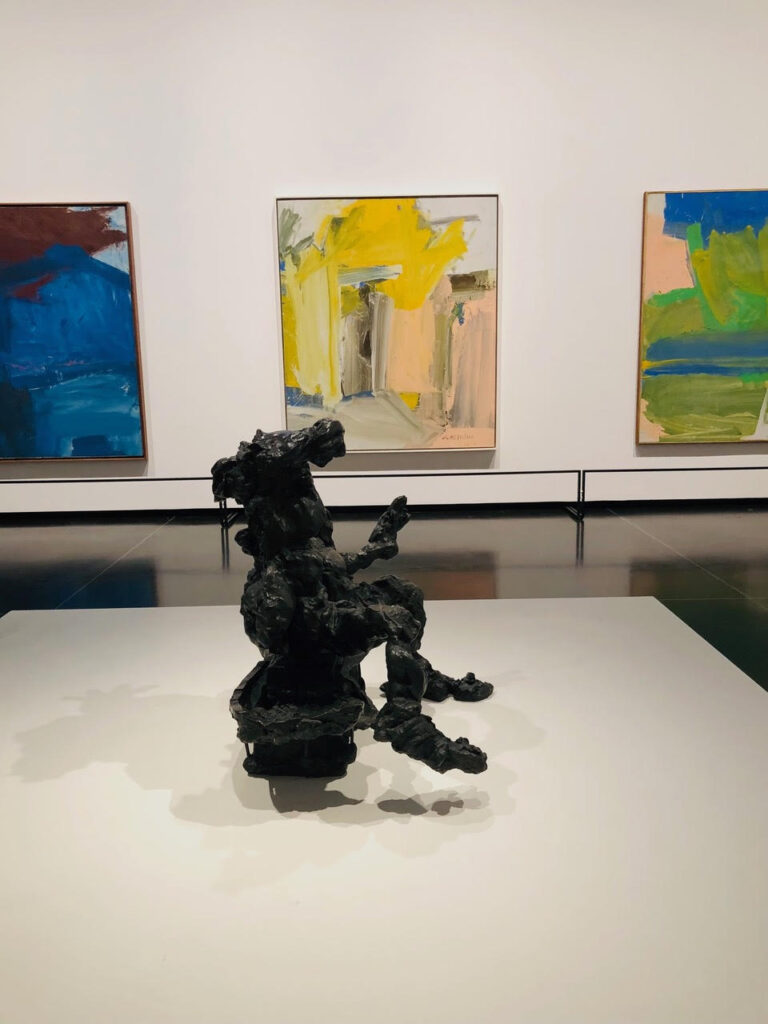 Works by Willem de Kooning at the Accademia
Works by Willem de Kooning at the Accademia
At the Accademia, make time for a new show of the paintings and sculpture of Willem de Kooning, noting that he was invited six times to exhibit at the Biennale.
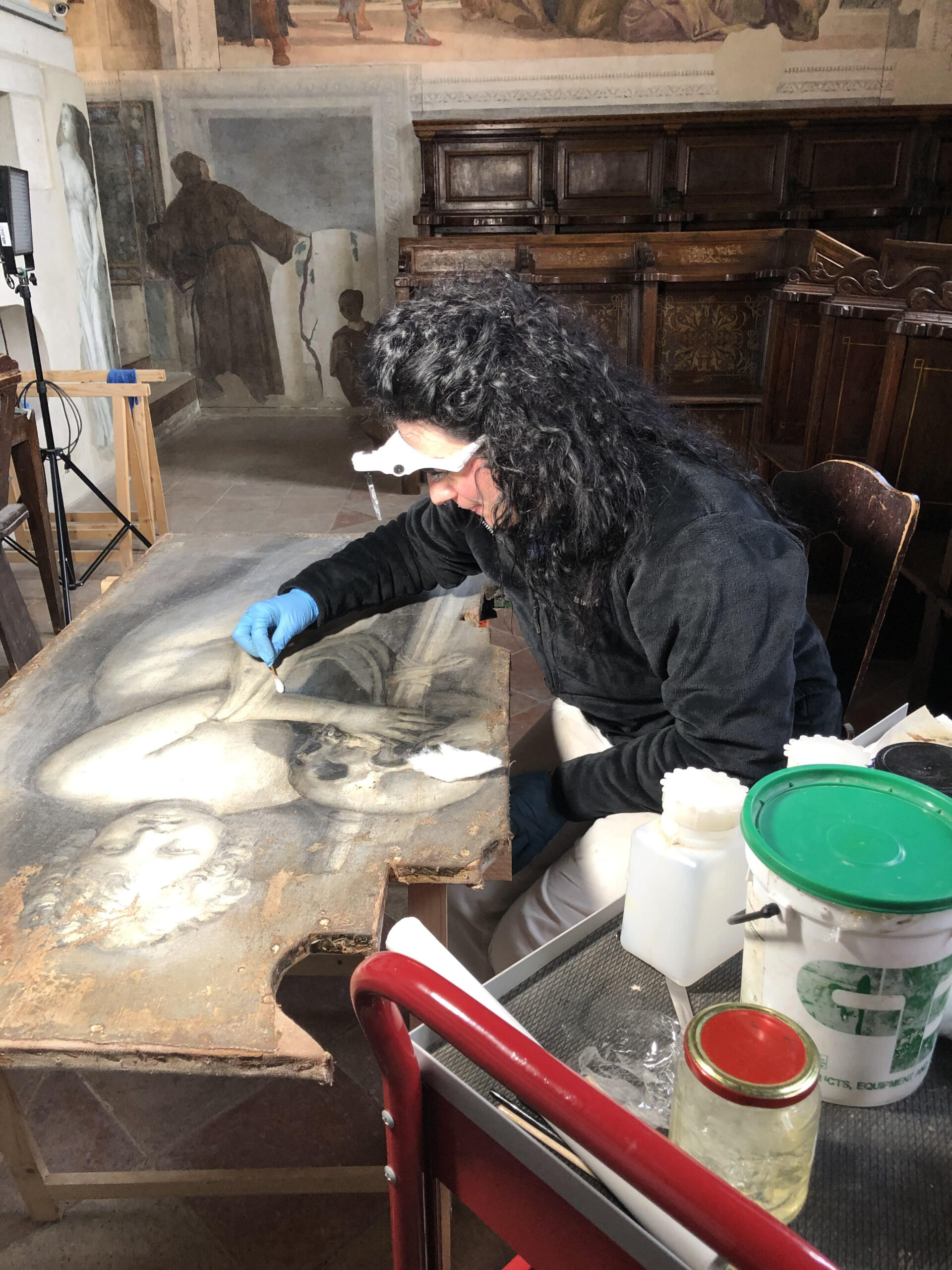 A restorer works on a funerary angel at San Sebastiano
A restorer works on a funerary angel at San Sebastiano
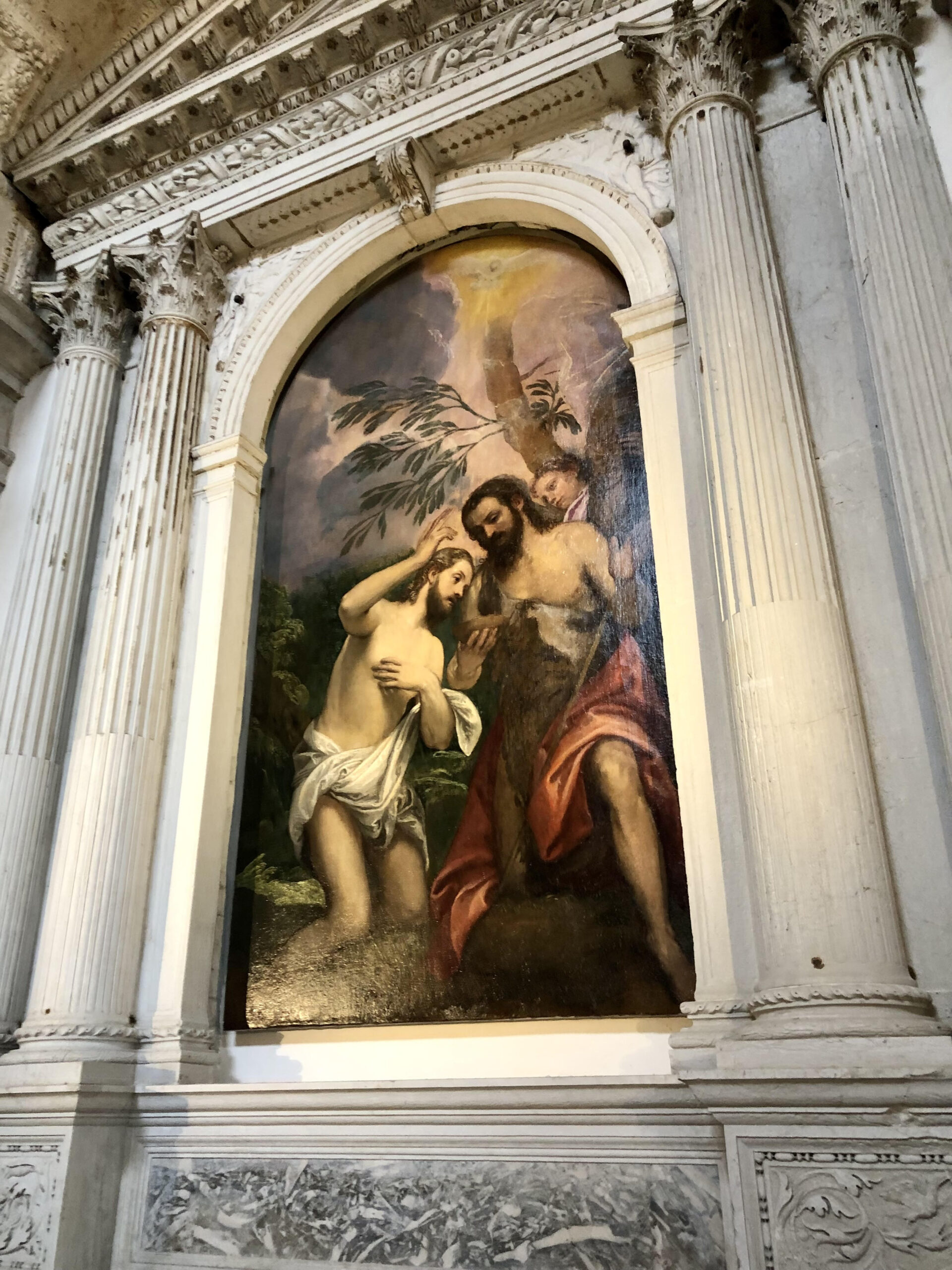
Two side chapels at San Sebastiano
 A visit to a Save Venice restoration at the church of San Sebastiano in the Dorsoduro neighborhood, although not part of the Biennale , shows how Venice past and present unite to celebrate artists from the Renaissance forward. Started by friars in 1393, it was transformed into its present appearance starting in 1506. A very young Paolo Veronese executed the ceiling of San Sebastiano, restored by Save Venice and later, although he was not the actual architect, his influence was expressed throughout the church. Seeing a side chapel and a ceiling painting of a woman holding a book restored by Chicagoans Jill and Richard Almeida brought home the link between Chicago and Venice as we saw
A visit to a Save Venice restoration at the church of San Sebastiano in the Dorsoduro neighborhood, although not part of the Biennale , shows how Venice past and present unite to celebrate artists from the Renaissance forward. Started by friars in 1393, it was transformed into its present appearance starting in 1506. A very young Paolo Veronese executed the ceiling of San Sebastiano, restored by Save Venice and later, although he was not the actual architect, his influence was expressed throughout the church. Seeing a side chapel and a ceiling painting of a woman holding a book restored by Chicagoans Jill and Richard Almeida brought home the link between Chicago and Venice as we saw
often during this magical visit.
 Melissa Conn, Save Venice’s local Executive Director, at San Sebastiano
Melissa Conn, Save Venice’s local Executive Director, at San Sebastiano
Melissa Conn, local Executive Director for Save Venice, told us.
“We celebrate the up and coming artists appearing in the Biennale, just as we appreciate Paolo Veronese who was once one himself. What a great blessing for Venice’s economy this celebration is, and it is wonderful to see all the energy it brings.”
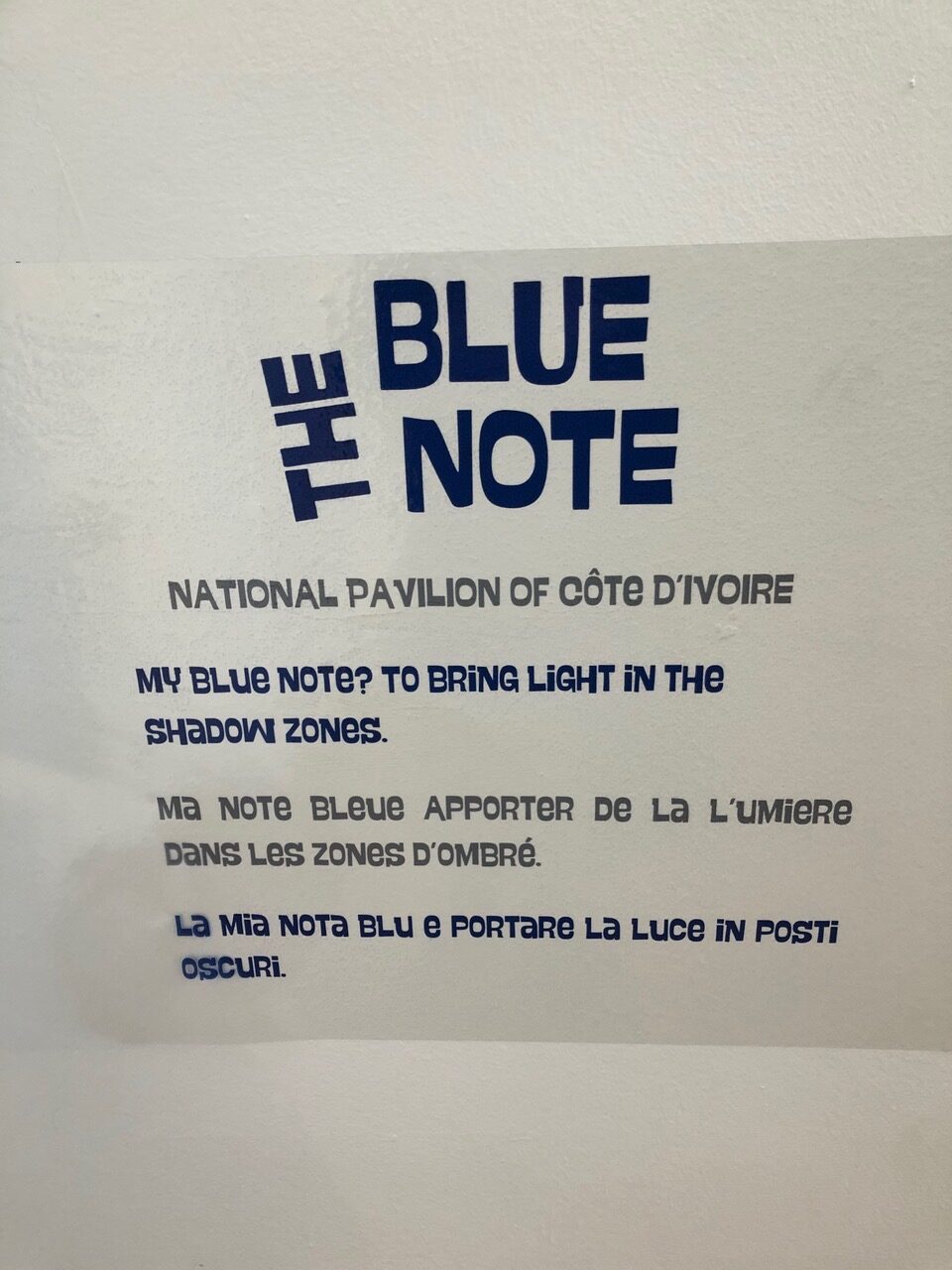
The Ivory Coast’s Pavilion was the most moving to me. If “Strangers Everywhere” was the Biennale theme, their message was not only powerful art but also about radical hospitality. A young man from Ethiopia who knew the curator greeted all with tiny cups of coffee and chocolate, an invitation to an afternoon jazz concert in the building along a Dorsoduro canal where their pavilion is housed, and the message that strangers can be friends. “In our contemporary times, where the Other is ostracized everywhere, it is this fierce and inalienable strength, this intact stride for hope that we intend to activate through the Ivorian Pavilion” its description says, noting that the blue note allowed Africans deported to the Americas “to sing of the solitude and fatigue of life but also hope.” And it honors Duke Ellington’s “It don’t mean a thing if it ain’t got that swing.”






